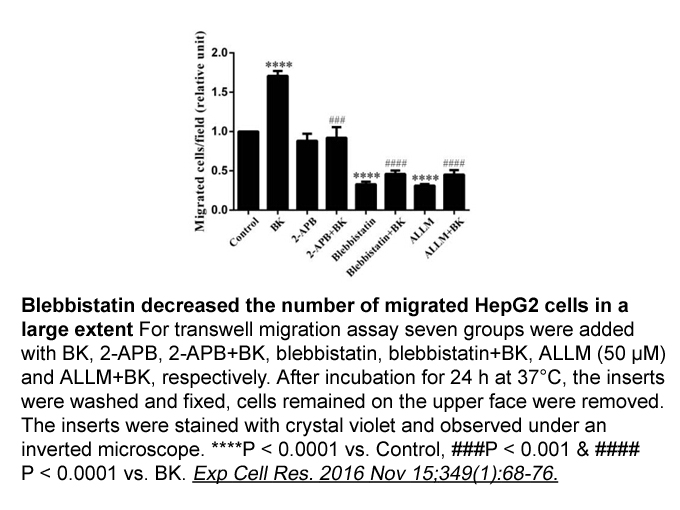Archives
Several conflicting large scale population based studies
Several conflicting large-scale population-based studies published recently (e.g. (Lau et al., 2015; Moriya et al., 2015; Tsunoda et al., 2014)) indicated that Dioscin moderate (or ‘non-alcoholic’) alcohol consumption either has a beneficial or detrimental association with prevalence or development of hepatic steatosis, questioning the distinction into non-alcoholic and alcoholic hepatic steatosis. Furthermore, the impact of irregular heavy (binge) drinking on liver disease among moderate drinkers is currently unknown (Mathurin and Deltenre, 2009; Rehm and Roerecke, 2015). In the US, an episodic heavy drinking pattern is more common than chronic heavy drinking (), and the prevalence of heavy episodic drinking is high or on the rise in many countries (Shield et al., 2013).
Material and Methods
Role of Funding Source
The work was financially supported by a grant from the National Institute on Alcohol Abuse and Alcoholism (NIAAA) at the National Institutes of Health (grant number R21AA023521-01A1 to MR). The sponsor of the study had no role in study design, data collection, data analysis, data interpretation, or writing of the report. The authors collected the data, and had full access to all of the data in the study. The authors also had final responsibility for the decision to submit the study results for publication.
Discussion
Using high-quality epidemiological evidence, the association between alcohol consumption as a risk factor for hepatic steatosis was complex and non-linear, showing marked differences by ethnicity. At moderate alcohol intake  (up to 20g/day), studies from Japan showed a beneficial association, whereas studies from other countries, including China, Europe and North America, showed no overall association. The difference between studies from Japan and other countries was consistent and independent of the adjustment for confounding for metabolic risk factors, baseline prevalence of hepatic steatosis, and mean age at baseline. This questions the usefulness of terms such as ‘alcoholic’ or ‘non-alcoholic’, at least for hepatic steatosis, and highlights the need and importance of evidence from multiple populations of diverse drinking patterns and ethnic backgrounds. Others have noted that thresholds for non-alcoholic and alcoholic steatosis are arbitrary and a distinction between the two seems impossible (Nascimbeni et al., 2013; Volzke, 2012). Our results support this view. Nevertheless, there was a lack of data for high alcohol intake in countries other than Japan to draw firm conclusions about a dose-response relationship beyond moderate alcohol intake.
Sex was an important effect modifier when the whole range of alcohol consumption was considered. In general, consequences of heavy alcohol use appear to be more negative for women than for men based on higher blood alcohol levels because of smaller body size, lower body water content, and lower gastric alcohol dehydrogenase activity (Lieber, 2004; Zimmerman, 1999).
Across countries, binge drinking in moderate drinkers in comparison to non-binge drinkers was consistently associated with higher risk for hepatic steatosis in men, though evidence was scarce and mostly unadjusted. A potential explanation of the detrimental association in men may be that in high doses, as the doses ingested in binge-drinking, there is a dose dependent alcohol-induced hepatotoxicity (Lieber, 2004; Zimmerman, 1999; Zimmerman and KG, 1955). The one study reporting results for women did not show evidence for an association; however, binge drinking is usually less prevalent among women. Higher prevalence and volume of binge drinking in men might explain the sex discrepancy; however, few data were available for such analyses and conclusions need to be treated with caution.
(up to 20g/day), studies from Japan showed a beneficial association, whereas studies from other countries, including China, Europe and North America, showed no overall association. The difference between studies from Japan and other countries was consistent and independent of the adjustment for confounding for metabolic risk factors, baseline prevalence of hepatic steatosis, and mean age at baseline. This questions the usefulness of terms such as ‘alcoholic’ or ‘non-alcoholic’, at least for hepatic steatosis, and highlights the need and importance of evidence from multiple populations of diverse drinking patterns and ethnic backgrounds. Others have noted that thresholds for non-alcoholic and alcoholic steatosis are arbitrary and a distinction between the two seems impossible (Nascimbeni et al., 2013; Volzke, 2012). Our results support this view. Nevertheless, there was a lack of data for high alcohol intake in countries other than Japan to draw firm conclusions about a dose-response relationship beyond moderate alcohol intake.
Sex was an important effect modifier when the whole range of alcohol consumption was considered. In general, consequences of heavy alcohol use appear to be more negative for women than for men based on higher blood alcohol levels because of smaller body size, lower body water content, and lower gastric alcohol dehydrogenase activity (Lieber, 2004; Zimmerman, 1999).
Across countries, binge drinking in moderate drinkers in comparison to non-binge drinkers was consistently associated with higher risk for hepatic steatosis in men, though evidence was scarce and mostly unadjusted. A potential explanation of the detrimental association in men may be that in high doses, as the doses ingested in binge-drinking, there is a dose dependent alcohol-induced hepatotoxicity (Lieber, 2004; Zimmerman, 1999; Zimmerman and KG, 1955). The one study reporting results for women did not show evidence for an association; however, binge drinking is usually less prevalent among women. Higher prevalence and volume of binge drinking in men might explain the sex discrepancy; however, few data were available for such analyses and conclusions need to be treated with caution.
Conclusions
The etiology of liver diseases is multi-factorial and given the results of this meta-analysis, alcohol\'s effects on liver steatosis are complex and non-linear. There was good evidence that alcohol consumption <20g/day has a beneficial effect on the development of hepatic steatosis in Japan, in contrast to other high-income countries. At least sex, ethnicity, BMI, and possibly drinking patterns seem to modify the relationship between alcohol consumption and hepatic steatosis. Large heterogeneity outside Japan precludes us from making firm judgements. More and higher quality research in diverse et hnic populations is needed to further clarify this relationship.
hnic populations is needed to further clarify this relationship.